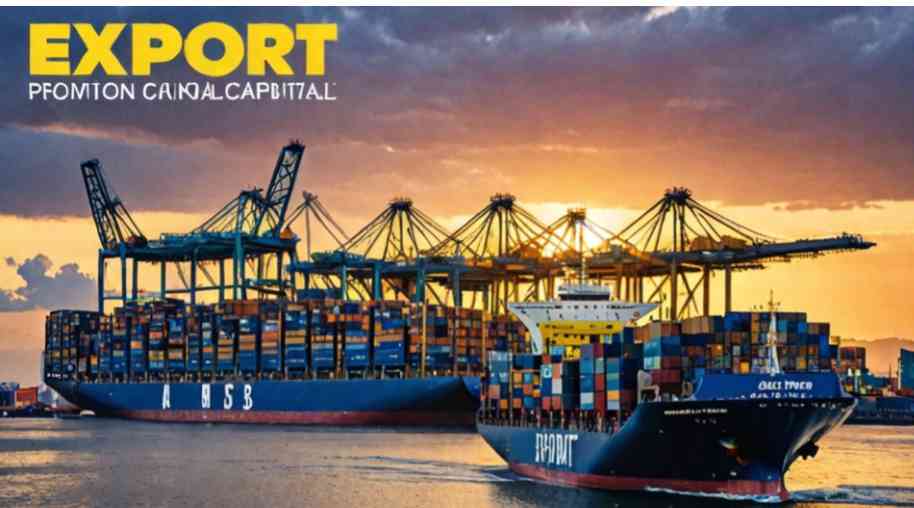EPCG Full Form-Export Promotion Capital Goods
by Shashi Gaherwar
0 2002
Export Promotion Capital Goods (EPCG): Benefits, Eligibility, and Impact on Global Trade
The Export Promotion Capital Goods (EPCG) scheme is a government initiative designed to boost exports by allowing businesses to import capital goods at zero or reduced customs duty. This policy helps manufacturers improve production capabilities, enhance competitiveness, and increase their share in international markets.

This article explores the EPCG scheme, its advantages, eligibility criteria, and its role in global trade.
What is the EPCG Scheme?
The EPCG scheme allows exporters to import machinery and capital goods required for production without paying high import duties. In return, businesses must commit to a specific export obligation to contribute to foreign exchange earnings.
This initiative is particularly beneficial for industries like textiles, automobiles, pharmaceuticals, and engineering, where advanced machinery is crucial for maintaining international standards.
Key Features of the EPCG Scheme
- Duty-Free Import – Companies can import capital goods without paying customs duty.
- Export Obligation – Businesses must fulfill an export obligation equivalent to six times the duty saved within six years.
- Applicable for Multiple Industries – The scheme benefits sectors like manufacturing, agriculture, and service industries.
- Technological Advancement – Helps businesses upgrade machinery and improve efficiency.
- Reduced Production Costs – Lowers capital investment expenses, making exports more competitive.
Benefits of the EPCG Scheme
- Boosts Export Competitiveness
By reducing the cost of acquiring advanced machinery, the EPCG scheme allows businesses to produce high-quality goods at competitive prices in international markets. - Encourages Foreign Exchange Earnings
The scheme mandates an export obligation, ensuring that companies contribute to foreign exchange inflows, strengthening the country’s economy. - Supports Industrial Growth
By facilitating access to modern technology, the EPCG scheme enhances productivity and quality standards in various industries. - Promotes Job Creation
Increased production capacity and export growth lead to higher employment opportunities in manufacturing and related sectors. - Enhances Economic Development
The scheme aids in the expansion of industries, making them globally competitive and contributing to national economic growth.
Eligibility Criteria for the EPCG Scheme
To avail of the EPCG benefits, businesses must:
- Be a registered exporter or manufacturer-exporter.
- Provide an export obligation commitment.
- Use the imported capital goods only for manufacturing export products.
- Adhere to the stipulated time frame for export obligations.
Challenges in Implementing the EPCG Scheme
- Compliance Burden
Fulfilling export obligations within the given timeframe can be challenging for small businesses due to market fluctuations. - High Penalties for Non-Compliance
Failure to meet the export obligation results in penalties and repayment of waived duties with interest. - Dependence on Global Market Conditions
Economic downturns, trade restrictions, and currency fluctuations can affect export performance and compliance with EPCG obligations.
Future of the EPCG Scheme
With increasing globalization, governments continue to refine the EPCG scheme by introducing flexible policies, extending compliance deadlines, and integrating digital tracking systems for better monitoring. As industries shift towards automation and sustainability, the EPCG scheme is expected to evolve to support investments in green and digital technologies.
The Export Promotion Capital Goods (EPCG) scheme is a vital policy that supports exporters by reducing capital costs, enhancing competitiveness, and driving industrial growth. By leveraging this scheme effectively, businesses can expand their global footprint while contributing to the economy. As trade policies evolve, continued government support will ensure that EPCG remains a key driver of export-led development.
Further Learning Resources
If you’re passionate about building a successful blogging website, check out this helpful guide at Coding Tag – How to Start a Successful Blog. It offers practical steps and expert tips to kickstart your blogging journey!
For dedicated UPSC exam preparation, we highly recommend visiting www.iasmania.com. It offers well-structured resources, current affairs, and subject-wise notes tailored specifically for aspirants. Start your journey today!

Share:








Comments
Waiting for your comments